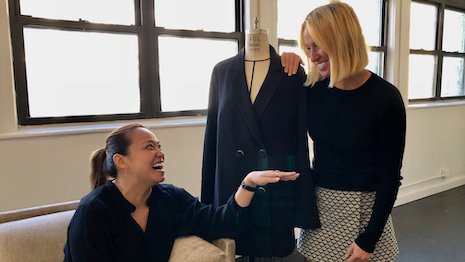- About
- Subscribe Now
- New York,
April 22, 2019

 Antibad focuses on sustainable fashion. Image credit: Antibad
Antibad focuses on sustainable fashion. Image credit: Antibad
While sustainable products and services lean towards a luxury price point, the real change will have to come from a more accessible financial level, as consumers claim affordability is the number one obstacle for embracing ethical goods.
Luxury’s hold on sustainability is keeping it from becoming as ubiquitous as the world needs, since a sweeping movement of “going green” will be the most helpful outcome. According to a survey by A.T. Kearney, 70 percent of consumers are thinking about the environment when shopping but only 52 percent have actually changed their retail behavior, with many citing price as a roadblock.
"Going green is officially mainstream – however consumers need help to action on their aspirations to do good by Mother Earth," said Corey Chafin, principal at A.T. Kearney, and co-author of Harvesting the Green Opportunity for CPGs and Retailers. "More than 71 percent of consumers consider the environment when shopping, though as the best of intentions can sometimes fall flat, only 52 percent of these consumers shifted their purchase decisions towards green products in the last year.
"With this self-awareness, consumers demand brands and retailers nudge them towards 'green' choices."
Going green
The report surveyed 1,000 respondents on their thoughts about the environmental impacts from retail.
A.T. Kearney’s 2019 Earth Day Consumer Sentiments Survey shows that cost is the number one reason shoppers are not buying green amongst consumers of all income levels, including affluents.
 The debate over sustainable fashion continues. Image credit: Blackglama
The debate over sustainable fashion continues. Image credit: Blackglama
While the notion of “going green” has become mainstream, it can go much further.
Eighty-one percent of consumers stated that they think that changing everyday behavior is the best way to help the Earth. Around 65 percent believe that companies should go further than what is required by the government.
Consumers are much more interested in actionable, immediate claims such as “product is recyclable” rather than an abstract concept such as “product is made in a way that reduces energy consumption.”
Additionally, brands who attempt to capitalize on consumers’ desire to go green with false claims do much more damage to their images when exposed than if they had not attempted to be green at all.
There are a number of ways in which brands can build trust when it comes to going green, with 40 percent of respondents feeling trust when a brand provides facts and evidence to support claims. However, 37 percent feel it is more trustworthy when an outside agency such as the government backs up these claims.
 Misha Nonoo offers on-demand sustainable fashion. Image credit: Misha Nonoo
Misha Nonoo offers on-demand sustainable fashion. Image credit: Misha Nonoo
Fashion is a significant sector that will benefit from sustainable action. For instance, the report showed that there was a 130 percent increase in Google searches on sustainable fashion in the last year.
Since October, there has also been a 119 percent jump in searches for vegan leather.
Fashion and sustainability
A growing number of fashion companies are tackling sustainability issues head-on, as the industry continues to battle a reputation for being environmentally harmful.
During the “Future Friendly Wardrobe: Sustainability and Circularity in the Fashion Industry” panel at the Design Our Future conference on April 4, fashion insiders discussed how brands can be more environmentally-conscious. Emerging brands are focusing on strategies including reselling, limiting inventory and creating multifunctional items (see story).
Those that are hoping to change their brands to be more environmentally friendly will need to speak the language of each department's executives for better communication, advised an LVMH environmental director.
While turning a company to be a sustainable enterprise can be a daunting exercise to some, especially a heritage company such as LVMH who has such a long history, the group's environment director Sylvie Bénard explained that it is important to work with everyone throughout an organization and talk to them in a language they understand. During a panel session at the Condé Nast International Luxury Conference on April 11, Ms. Bénard, along with B-Team cofounder Jochen Zeitz and creative director of RÆBURN and Timberland Christopher Raeburn agreed that businesses need to do their part to change the direction in which the world is heading (see story).
"Eco-apparel is the next big thing, especially with younger consumers (ages 18 to 44); nearly half of these consumers expect to shift towards eco-apparel in the next year," Mr. Chafin said. "For this values-driven consumer segment, eco-apparel is dual purpose: both fashionable and a broadcast of their personal values – enabling them to literally wear their heart on their sleeves."
Share your thoughts. Click here